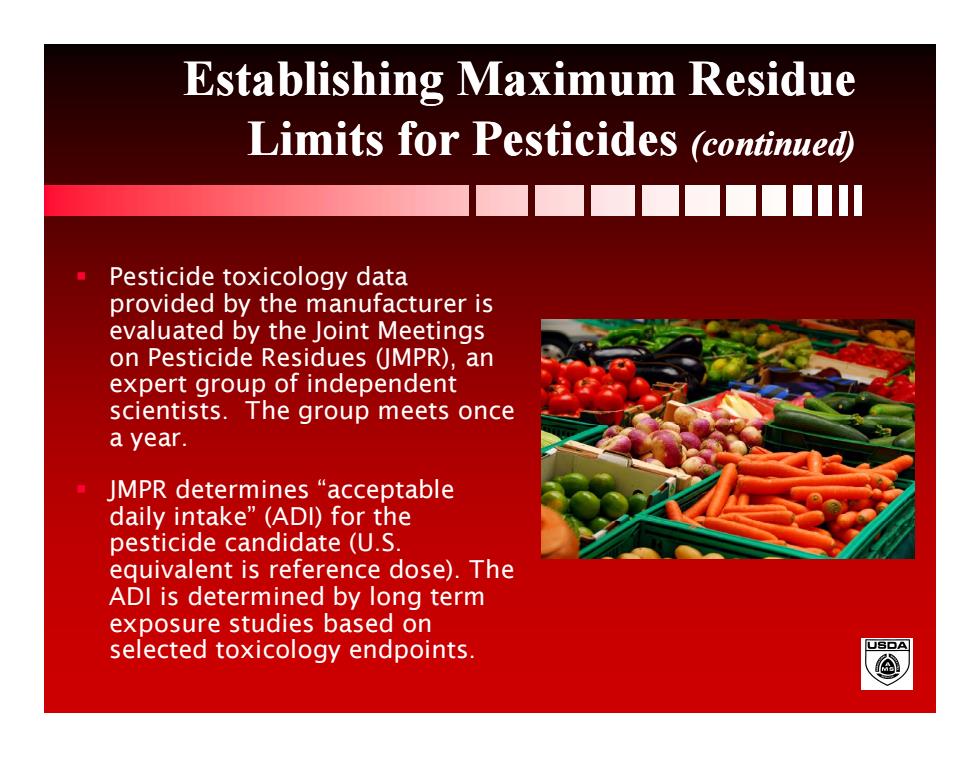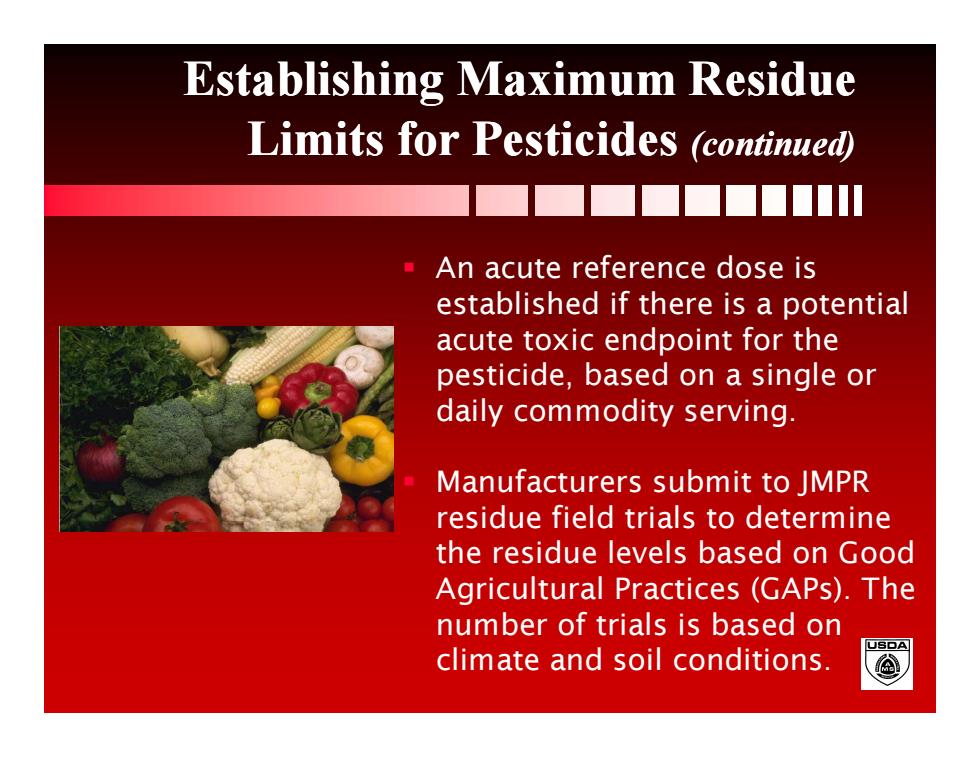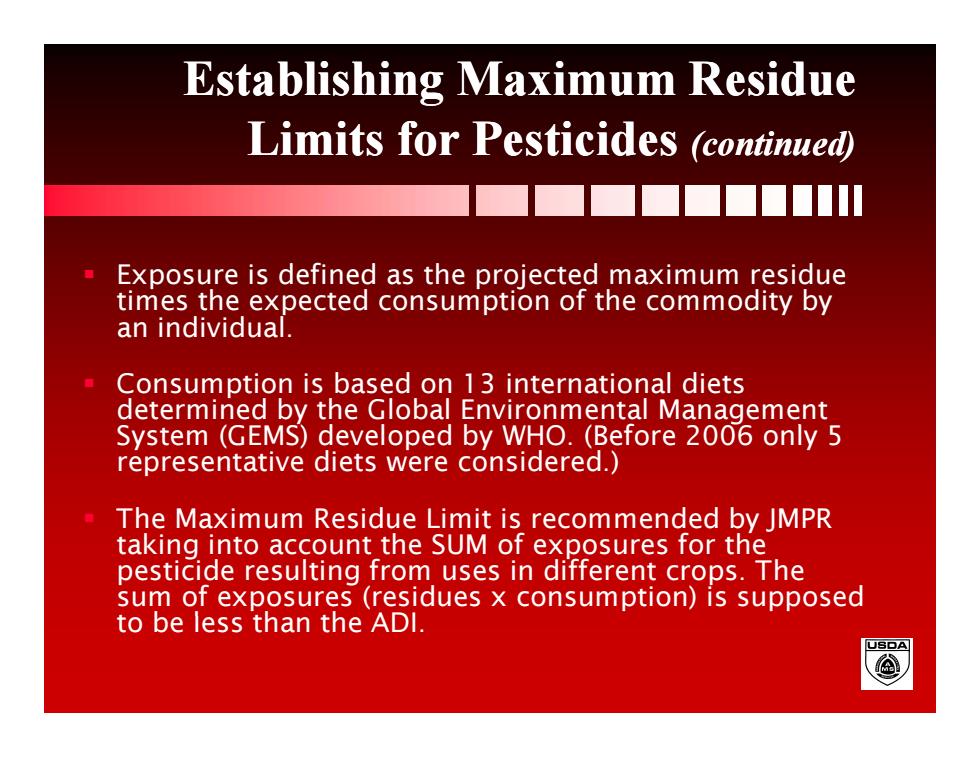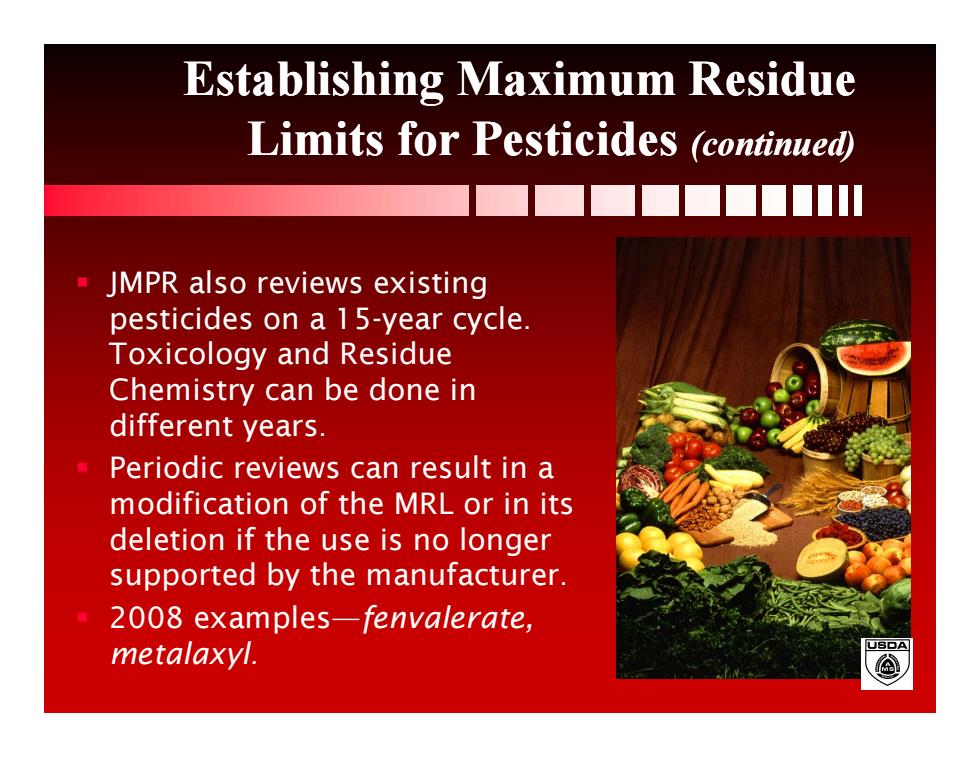
Establishing Maximum Residue Limits for Pesticides (continued 川 Pesticide toxicology data provided by the manufacturer is evaluated by the Joint Meetings on Pesticide Residues (JMPR),an expert group of independent scientists.The group meets once a year. JMPR determines "acceptable daily intake"(ADI)for the pesticide candidate (U.S equivalent is reference dose).The ADI is determined by long term exposure studies based on selected toxicology endpoints. USDA
Establishing Maximum Residue Limits for Pesticides Limits for Pesticides Pesticides (continued) (continued) Pesticide toxicology data provided by the manufacturer is evaluated by the Joint Meetings on Pesticide Residues (JMPR), an expert group of independent scientists. The group meets once a year. JMPR determines “acceptable daily intake daily intake (ADI) for the ” (ADI) for the pesticide candidate (U.S. equivalent is reference dose). The ADI is determined by long term exposure t di b d s t udies based on selected toxicology endpoints

Establishing Maximum Residue Limits for Pesticides (continued ■eII An acute reference dose is established if there is a potential acute toxic endpoint for the pesticide,based on a single or daily commodity serving Manufacturers submit to JMPR residue field trials to determine the residue levels based on Good Agricultural Practices (GAPs).The number of trials is based on USDA climate and soil conditions
Establishing Maximum Residue Limits for Pesticides Limits for Pesticides Pesticides (continued) (continued) An acute reference dose is established if there is a potential acute i d i f h toxic en dpoint for t h e pesticide, based on a single or dail y yg commodit y servin g. Manufacturers submit to JMPR residue field trials to determine the residue levels based on Good Agricultural Practices (GAPs). The numb f t i l i b d ber of t rials i s based on climate and soil conditions

Establishing Maximum Residue Limits for Pesticides (continued) ■■■I Exposure is defined as the projected maximum residue times the expected consumption of the commodity by an individual. ■ Consumption is based on 13 international diets determined by the Global Environmental Management System (GEMS)developed by WHO.(Before 2006 only 5 representative diets were considered.) The Maximum Residue Limit is recommended by JMPR taking into account the SUM of exposures for the pesticide resulting from uses in different crops.The sum of exposures (residues x consumption)is supposed to be less than the ADl. USDA
Establishing Maximum Residue Limits for Pesticides Limits for Pesticides Pesticides (continued) (continued) Exposure is defined as the projected maximum residue times the expected consumption of the commodity by an individual an individual. Consumption is based on 13 international diets determined by the Global Environmental Management S (GEMS) d l d b WHO (B f 2006 l 5 System (GEMS) developed b y WHO. (B e fore 2006 only 5 representative diets were considered.) The Maximum Residue Limit is recommended by JMPR taking into account the SUM of exposures for the pesticide resulting from uses in different crops. The sum of exposures (residues x consumption) is supposed t b l th th ADI t o b e less than th e ADI

Establishing Maximum Residue Limits for Pesticides (continued JMPR also reviews existing pesticides on a 1 5-year cycle. Toxicology and Residue Chemistry can be done in different years. Periodic reviews can result in a modification of the MRL or in its deletion if the use is no longer supported by the manufacturer. 2008 examples-fenvalerate, metalaxyl. USDA
Establishing Maximum Residue Limits for Pesticides Limits for Pesticides Pesticides (continued) (continued) JMPR also reviews existing pesticides on a 15- y y ear c ycle. Toxicology and Residue Chemistry can be done in different years. Periodic reviews can result in a modification of the MRL or in its deletion if the use is no longer supported by the manufacturer. 2008 examples —fenvalerate fenvalerate, metalaxyl